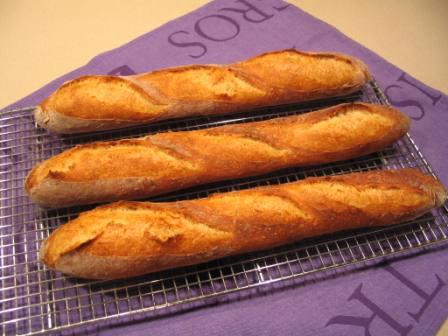Whole Wheat Genzano Country Bread
Today's bake was Daniel Leader's Whole Wheat Genzano Country Bread, from his Local Breads book. This bread combines a biga naturale for flavor with yeast for shorter, more predictable fermentation times.
- Log in or register to post comments
- 8 comments
- View post
- pmccool's Blog




 I found this site a couple of months ago and have been following some fascinating posts and the great exchange of information among the members.
I found this site a couple of months ago and have been following some fascinating posts and the great exchange of information among the members.